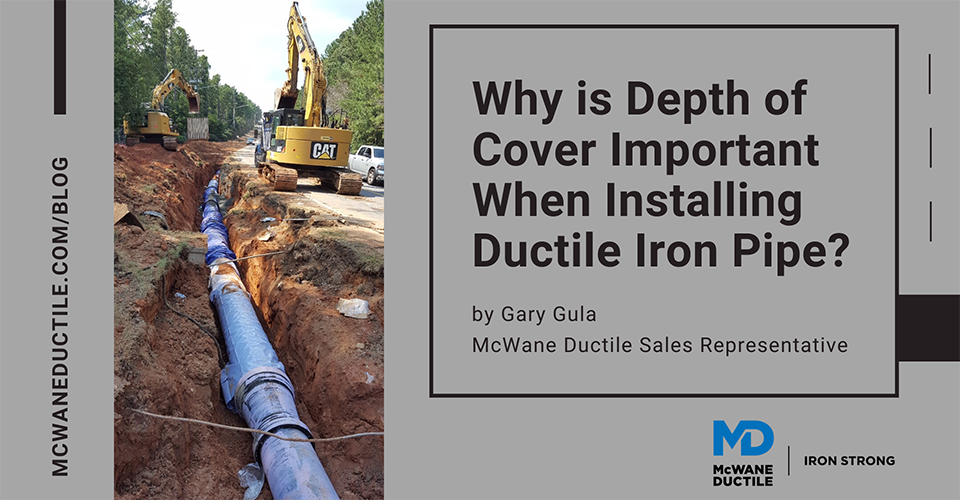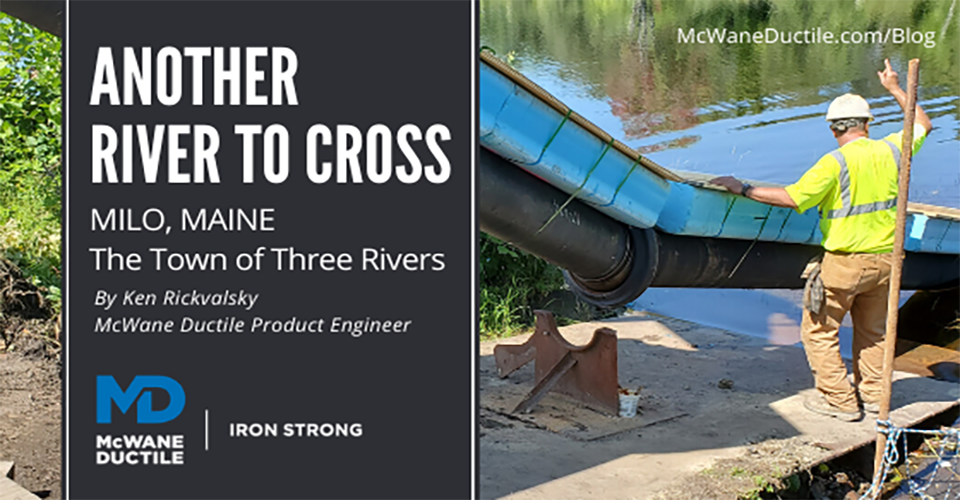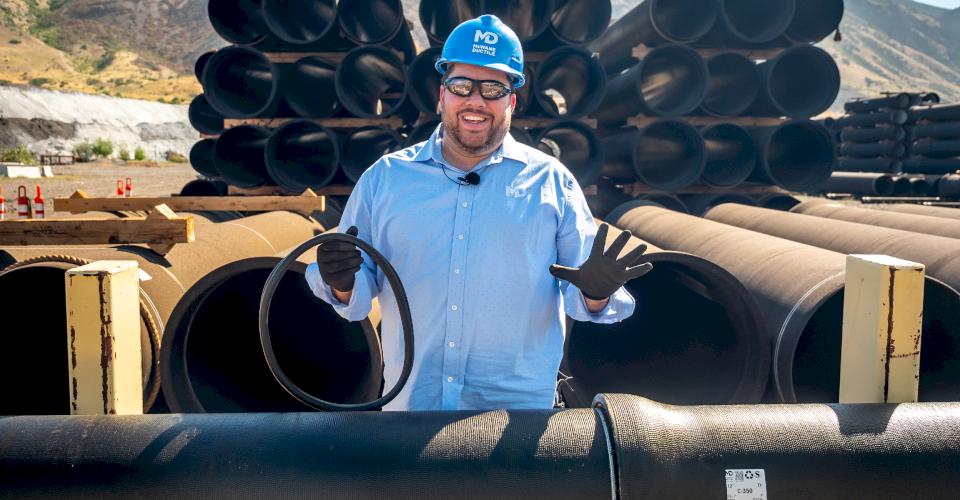-
Why is Depth of Cover Important When Installing Ductile Iron Pipe?
12/20/2019 In Installation TechnicalWithin this article, we will discuss Depth of Cover and the key factors to consider when selecting the type of trench (or laying condition) for your application. We’ll also discuss why it is important to choose the correct trench application, not only for today, but for future adjustments or improvements that are planned for the surrounding area where the pipeline is being installed.
-
V-Bio® Or Cathodic Protection – An Honest Comparison
12/13/2019 In Installation Products TechnicalOdds are you may not be a certified corrosion specialist or an expert in the corrosion field for that matter. Most engineers that are responsible for specifying water projects are not. There are of course engineers who dedicate their entire careers to the subject. The good news is that McWane Ductile is committed to excellence in the corrosion field and provides professionals to assist you with making sound decisions regarding corrosion control.
-
Key Considerations When Using DI Pipe for Bridge Crossings
11/29/2019 In Installation TechnicalBridge crossings, like many projects, can go exceptionally well with the proper upfront considerations. We will discuss the benefits of utilizing TR Flex® Ductile Iron Pipe and examine key topics involved in completing bridge crossing projects.
-
HDPE and DI Pipe - Differences That Matter - A Comparative Narrative
11/22/2019 In Installation TechnicalWhen choosing an appropriate utility piping material for your water or wastewater project, there is so much more to consider than just the purchase price alone. This comparison between two popular piping materials – HDPE and Ductile iron pipe – demonstrates the need for more than just a cursory review or habitual choice. At McWane Ductile, we are always available to run through the matrix with you. Some installations or conditions do favor alternate materials, yet it’s hardly ever a cut-and-dried deal. Let’s take a closer look to find out why.
-
The Developer Myth: Ductile Iron Pipe Is Too Expensive for Residential Applications
11/08/2019 In InstallationHow often have we heard a developer tell a utility they simply can’t afford to install Ductile iron pipe (DI Pipe) for a planned subdivision because it’s too expensive. After all, the developer is providing the water and wastewater mains for free, transferring ownership to the local utility usually after one year.
-
Another River to Cross: Milo, Maine, The Town of Three Rivers
11/07/2019 In InstallationForty miles north of Bangor, Maine, at the confluence of the Piscataquis, Pleasant and Sebec Rivers, is the town of Milo Maine, a charming enclave founded in 1802. The early history of Milo was dominated by iron works and railroads where it soon became home to the second largest railroad car and repair facility in the New England territory at that time.
-
Exorcising Restraint: Deleting the Demonology
10/18/2019 In Installation TechnicalGaskets Are Great
Rubber gaskets are the reliable workhorse of any Ductile iron pipe (DI pipe) joint. They provide long-lasting flexibility and a watertight seal against internal pressures upwards of 1,000 psi.
What they don’t do, however, is bind the joint longitudinally against such forces. In fact, without assistance from other variables, a push-on or mechanical joint of any diameter would calmly separate lengthwise against pressures as low as 50 psi.
-
Why Zinc on Ductile Iron Pipe and What's the Hype?
10/10/2019 In Installation Products TechnicalOver the past several years, you may have heard a lot about applying zinc to your Ductile iron pipe as either a means of corrosion protection or as an added product which will extend the life of DI pipe in a non-corrosive environment. In this blog, we will look a bit closer at the origin of the practice and effectiveness of using zinc for external corrosion protection.
-
Three Common Questions About Ductile Iron Pipe Gaskets
09/19/2019 In Installation ProductsIt is very common to get certain questions from our customers regarding the interchangeability of push-on or compression type gaskets that are typically supplied with Ductile iron pipe. These questions are usually easy to answer in a very definitive manner, but there are some exceptions. In this edition of Iron Strong, we will address the three most common questions about gaskets and why this can sometimes be confusing to our customers.
-
How to Avoid a Displaced or Rolled Gasket
09/13/2019 In Installation TechnicalEvery day around the world, Ductile iron pipe is being installed and used to provide individuals and families the luxury of having quick and easy access to clean water. From the manufacture to the contractor, the end goal is the same; that each pipe joint form a watertight seal after proper assembly.
A displaced or rolled gasket creating water loss in a ductile iron pipeline is one of the most common errors that occurs during joint assembly. Using the resources and experience of McWane Ductile’s long history of manufacturing iron pipe, this blog will provide some helpful tips regarding how to avoid this costly mistake when installing push-on joint pipe.
Latest Posts
- Developing an Asset Management Plan for Your Future Utility or Engineering Organization 12/04/2025 In Comparisons Industry
- Can Joining Water Works Industry Organizations Help You Grow Professionally? 10/21/2025 In Careers WaterWorks
- How Does Ductile Iron Pipe Provide Proven Resilience to Seismic Events? 09/04/2025 In Products Resiliency Technical
- How to Secure Green Reserve Sustainability Incentives Using State Revolving Funding & Ductile Iron Pipe 07/29/2025 In Energy Products Technical















